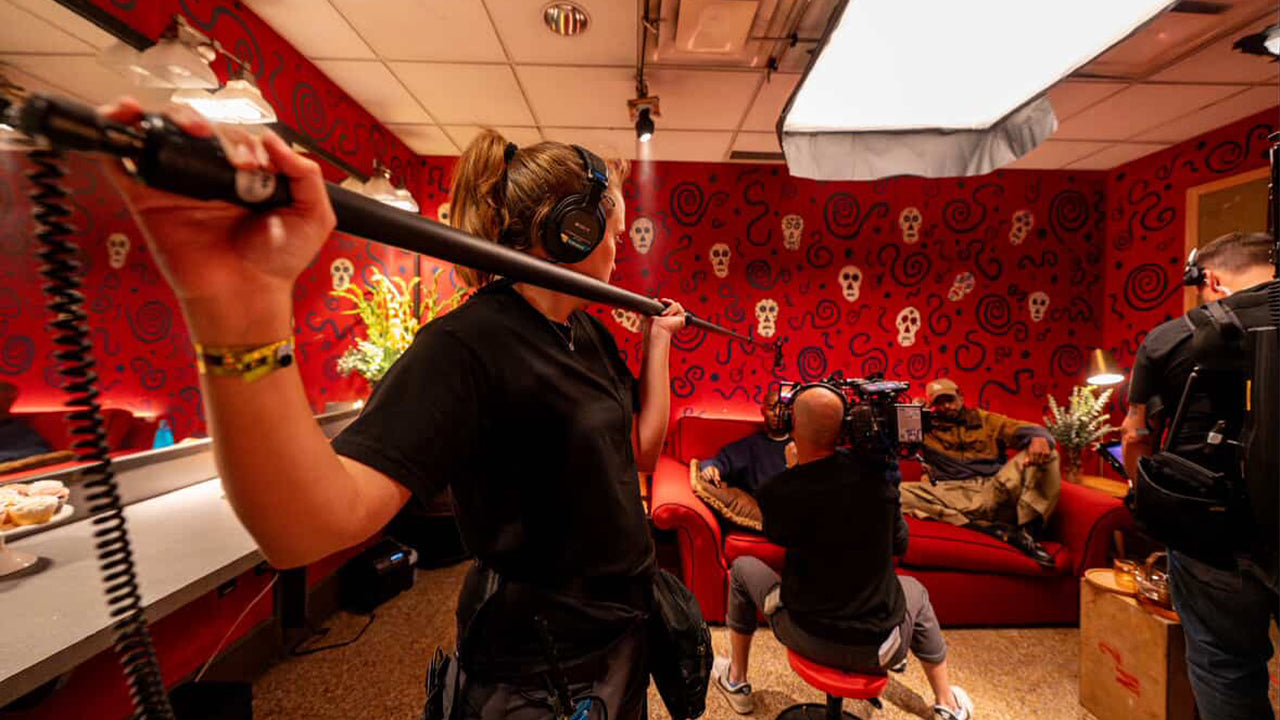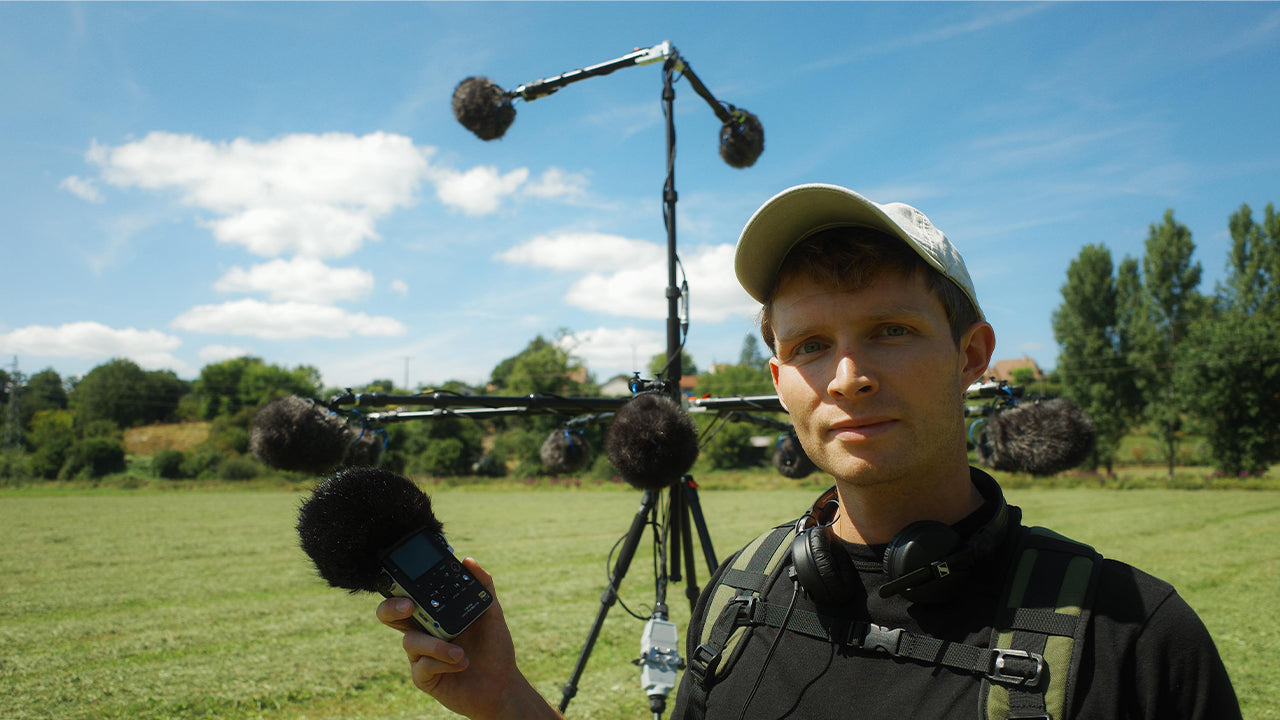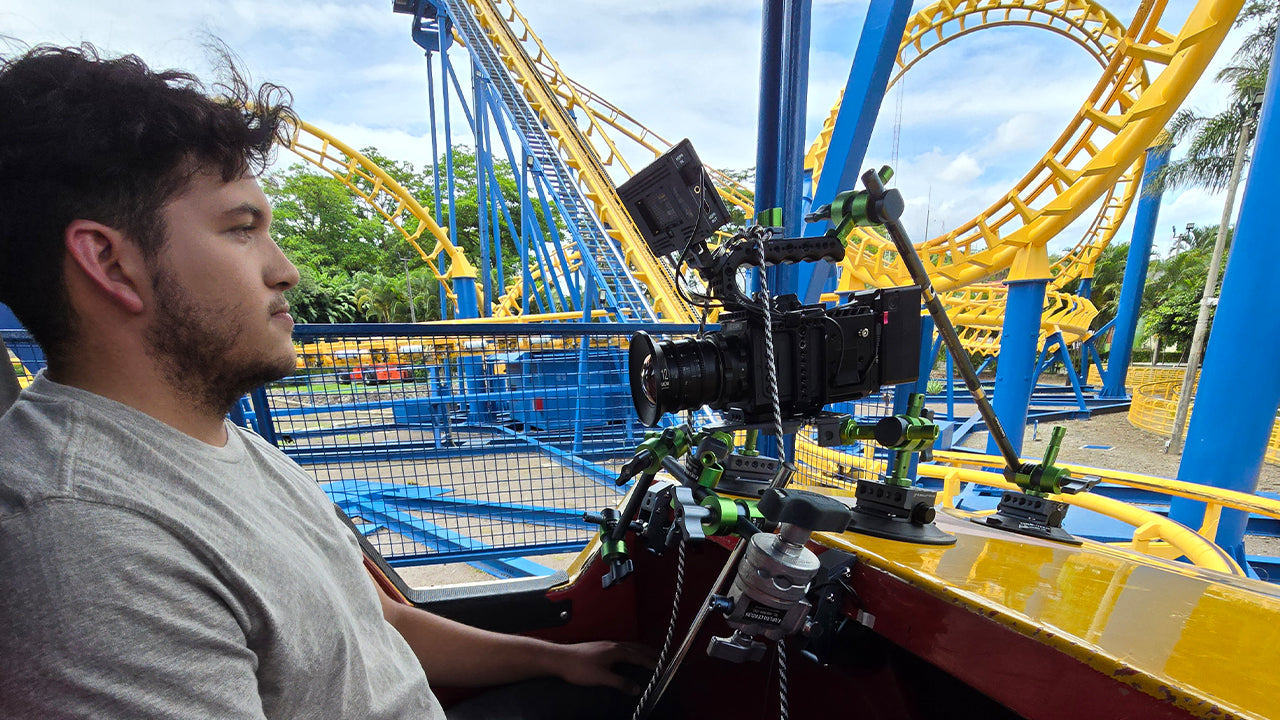Congratulations on being the June MyBBI Giveaway winner! For those not yet familiar with you and your work, could you tell us how your journey into sound began, and what inspired you to start Audio Field?
What a surprise it was to be the lucky winner of the giveaway! Thank you for the gift voucher and for the invitation to this interview.
To briefly introduce myself, my name is Paul Kusnierek, and I’m based in Paris, France. I studied sound at a Parisian school (ISTS) and trained on short film sets. I specialised in sound recording for various formats, including advertising, documentary, web, etc., and gradually expanded my expertise. I also work on sound editing with directors whose work I particularly admire. It’s through this practice that I truly understood the importance of sound and how it brings images to life.
The idea of creating sound libraries under the name Audio Field came to me after the lockdown. I realised how passionate I am about sound recording, and to stand out from all the offers you can find online, I decided to focus on immersive sound. I record audio based on the environment I’m in. I edit, organise, and rename the files to offer high-quality, ready-to-use sounds for sound editing and sound design.

Field recording in a city like Paris must bring both inspiration and challenges. Can you share what it's like to record ambience in such a busy environment, and how you navigate common audio obstacles like traffic?
It’s certain that Paris is not a restful city! Construction work, heavy traffic, honking horns, sirens, and an ever-present crowd however, all these elements contribute to the richness and unique soundscape of the capital.
When it comes to making recordings, these are indeed factors that must be taken into account. To bring nuance and prevent these sounds from always dominating, it’s essential to take the time to listen and observe the city, to understand its rhythms and its breathing. This means being mobile, reactive, and above all patient, key skills for practicing field recording.
I roamed the capital at night during the lockdown, and the sound atmosphere was completely different from what we usually know. The city was empty, quiet, and sounds that are usually masked by the daily hustle and bustle were revealed. It was an incredible experience. Today, I’m planning to explore Paris from a new angle and record the city as it truly is. Although I know it well, I know it will be a real challenge, and that’s precisely what makes the adventure so exciting. In both chaos and calm, every corner of sound has something to tell. You just have to take the time to listen.
You've also recorded in places such as Italy, Rwanda and Nigeria. How do you prepare for capturing sound in unfamiliar or unpredictable environments?

I’m fortunate to travel for work, and most of these trips are part of documentary film shoots. Over time, I’ve refined a
travel setup that’s compact, reliable, and versatile. At the heart of it is the
Sound Devices 833, housed in a custom Protogear bag, paired with
Wisycom MTP 40/
41 transmitters and the
MCR 54 receiver, powered by distributor and batteries from
Audioroot. I chose a boom pole from
VDB, a local manufacturer not far from where I live in Paris, and a range of microphones chosen to suit different climates. My go-to mics are from Sennheiser’s 8000 series: the
8060 shotgun and the
8050 supercardioid, both light, compact, and perfect for field work. Each mic is fitted with French Cinela shock mounts and wind protection, a Pianissimo for strong winds, and a Cosi for lighter conditions. I especially love the Cosi for its size and ease of use.
I also bring along a handheld recorder, the
Sony PCM D100 with a
Windkiller SE, which I use to capture ambient sounds. These recordings often serve the project, but they’re also part of my personal archive, a way of preserving a sonic memory of the places I visit. My setup stays consistent, and because the gear is my own, I know it inside out. That familiarity allows me to forget about the technicalities and
focus entirely on the sound.
I discover the locations when I arrive on site. My main concern is managing wind, so I always bring several wind protection options to adapt as best as possible to field conditions, as you well know! It all comes down to choices in sound, and sometimes compromises. You have to adapt and respond to the needs of both the production and post-production.
What does your typical portable field recording kit look like at the moment? Are there any pieces of gear you never leave home without, especially when working abroad?
I was lucky enough to get my hands on a
Sony PCM-D100 while it was still available. It’s a recorder I really appreciate, both for its quality and its design, it goes everywhere with me! I use it with the built-in microphones as well as with a pair of external microphones, the
mikroUši from LOM Label with your
Windbubbles. This kit is compact and lightweight, and fits easily into a small bag. It’s never far from me, whether in my daily life or on a shoot!
In your winning video, you use The Windkiller SE with your Sony PCM-D100. How has this combination performed for you in the field? Are there any projects you have worked on where this combination has saved the day?
This combination is so great! It’s not the kit I would choose for very windy conditions, but it works well in many situations. This setup is often with me, which is important because it allows me to easily record sounds I wouldn’t necessarily have planned for. I know this recorder very well, I even use it sometimes without headphones, in a kind of active meditation.
It actually
saved the day during a scouting trip for a
documentary in Ethiopia. We didn’t have our main filming gear with us. Around the corner of a street, an unexpected encounter turned into a key interview. The director wanted to capture the moment on the spot.
Fortunately, I had my recorder with me, equipped with the Windkiller SE, which allowed me to get a clean recording, captured simply, and at just the right moment.
You've worked across interviews, documentaries and pure field recording. How do you adapt your sound approach to suit different formats of storytelling?

During interview or documentary shoots, sound recording work is closely tied to the image. A collaborative dynamic develops with the technical team and the director. The sound directly serves the narrative. In my approach to field recording and sound library creation, there is no image during the recording process. And yet, the sounds are captured with the intention of later illustrating visuals. This requires a certain amount of projection, considering shot sizes, themes, and how the sound libraries will be constructed.
The biggest difference between working in a team and working alone also lies in how time and external elements are managed. On set, time is precious, and not everything is under control. Sometimes a sound take is disrupted by an unwanted noise, and there’s no opportunity to redo the recording.
On the other hand, during field recording sessions when I’m working alone, I can afford to take my time. If an unwanted sound occurs during a recording, I simply wait for it to pass before continuing, allowing me to fully explore a location I find interesting. It often takes many minutes to get a usable recording, but that time spent listening and waiting is an integral part of the process.
The equipment used also shapes the approach to recording. Capturing an ambient sound in surround with five microphones requires a different kind of listening and preparation than a simple recording with a mono directional mic. Each setup offers a different way of perceiving and engaging with the environment.
What's been one of the most surprising or rewarding projects you've worked on, either in Paris or abroad?
Traveling for film shoots is a real privilege. It has allowed me to discover places and meet people I never would have encountered otherwise. And while some experiences are unusual, like spending hours in the trunk of a car (which can be part of the job), they are also what make this work so unique.
To capture the sounds needed for certain packs in my sound library, I’ve had to wake up at dawn on weekends to record the Paris metro, spend entire winter nights outdoors in the streets, and spend entire days in the snowy mountains searching for the perfect sounds to build my libraries. These kinds of recording sessions require determination, but once I’m on site, the drive to create takes over. It’s this pursuit that keeps me going.
What advice would you give to someone just starting out in field recording or location sound?
The advice I would give is to practice, no matter what equipment you have! It’s possible to create beautiful things with limited means. What truly matters is the attention you give to what you’re doing, your curiosity, and your desire to learn. If your practice is fuelled by interest and passion, and if you enjoy what you do, that already means a lot. The dedication you put into your work will inevitably resonate with others and inspire them in turn.
What's next for you and Audio Field? Are there any upcoming locations, ideas or projects that you can share with us that you're excited about?
As for shootings, the documentary series I’m working on is ongoing. Upcoming trips are on the horizon, and I’m about to discover new sonic worlds. At the same time, I want to further develop sound libraries to enrich my catalogue.
Finding a balance between shooting and this more personal work isn’t always easy, whether it’s recording, editing, or uploading, everything takes time. Especially since I’m very meticulous and manage the entire process on my own.
Also, my interest in immersive sound recording is about to take a new turn. I’ve developed a native Atmos 7.0.2 recording system, with the ambition of using it to create new sound libraries for sound editors and sound designers. It’s a new chapter in the way I approach listening to sonic environments, with the same desire to share it!
Paul’s journey is a reminder that great sound recording is as much about the equipment as it is patience, curiosity and adaptability. From the still nights of lockdown to the busy streets of Paris, his work shows how the right tools can help capture moments that might otherwise be lost.
As he continues to push into immersive formats, Paul’s dedication to sharing soundscapes from across the world is both inspiring and practical for anyone starting out in field recording. Whether you’re an aspiring recordist or a seasoned sound professional, his advice is clear: keep listening, keep experimenting, and always be ready, because you never know when the perfect sound will reveal itself.











